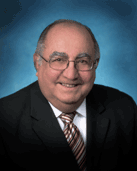By: John Krikorian, Publisher Business Life Magazine
 The Metro Board of Directors took a critical step in placing on the November ballot a new half cent sales tax measure for Los Angeles County that would finance dozens of transportation projects from fixing potholes to major highway construction, buying clean fueled buses and building new rail lines spread throughout the county in a concerted effort to keep pace with major population and job growth. The Metro Board of Directors took a critical step in placing on the November ballot a new half cent sales tax measure for Los Angeles County that would finance dozens of transportation projects from fixing potholes to major highway construction, buying clean fueled buses and building new rail lines spread throughout the county in a concerted effort to keep pace with major population and job growth.
Metro directors approved an ordinance including an expenditure plan that spells out in project detail how the sales tax – estimated to generate $40 billion over 30 years – would be spent. These monies also could be leveraged with state, federal and private sector funding. The Metro Board also passed a resolution formally requesting the Los Angeles County Board of Supervisors to place the ordinance on the ballot for the Nov. 4, 2008 countywide general election.
If the measure garners at least a two-thirds vote, it would become law in January. The ballot measure also is contingent on passage of state legislation, AB 2321 (Feuer), which would give Los Angeles County authority to levy the tax if voters approve it.
The new sales tax would fund an aggressive attack on gridlock in the nation’s most traffic-choked region. It would finance such new transit projects as the Foothill Extension of the Metro Gold Line, a subway extension and Expo light rail line on the Westside, a rail connection to LAX, extending the Metro Green Line to the South Bay corridor, a downtown rail connector that would make transfers on the light rail lines seamless, an extension of the popular Metro Orange Line busway to Chatsworth and much more. Major highway projects such as adding capacity to the I-5 from the I-605 to the Orange County Line also would be funded.
In addition, the 88 cities and county unincorporated areas would receive 15 percent of sales tax revenue for local transit services, street resurfacing, left hand turn signals, bikeways, pedestrian improvements and other local transportation priorities. Twenty percent of the monies would help subsidize countywide bus operations, which will help keep fares low for seniors, students and commuters. Another 5 percent will pay for Metrolink operations, maintenance and expansion and for purchasing Metro Rail train cars, rail yards and other system improvements.

|